Air Pollution-A Crisis Without Borders
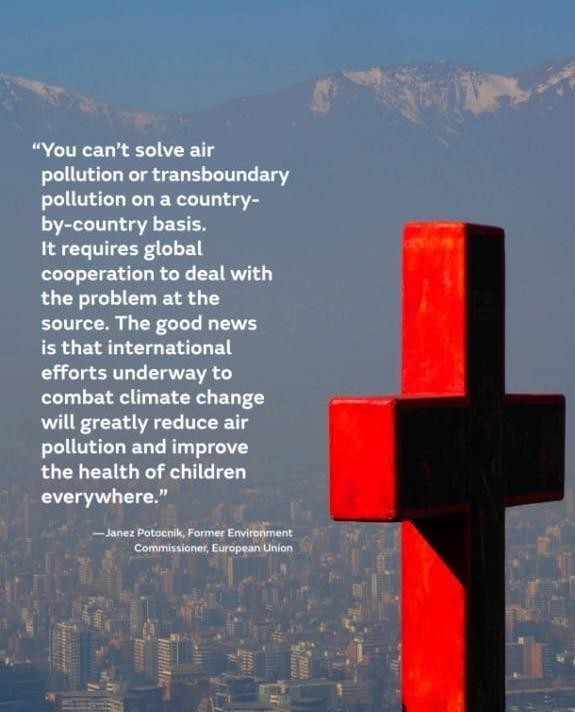
“When it comes to pollution, we are all connected. There is an invisible toxic thread that links workers being poisoned in low- and middle-income countries producing products and consumers exposed to poisons while consuming these products.”
Context:
- A dense layer of smog enveloped Delhi, Noida, Ghaziabad, and other parts of the National Capital Region (NCR) on Wednesday (November 13) morning, causing a significant drop in visibility.
- According to Swiss group IQAir's live ratings, the AQI in Delhi was 1133 (hazardous), with PM2.5 as the main pollutant.
1.
What is Air Pollution?
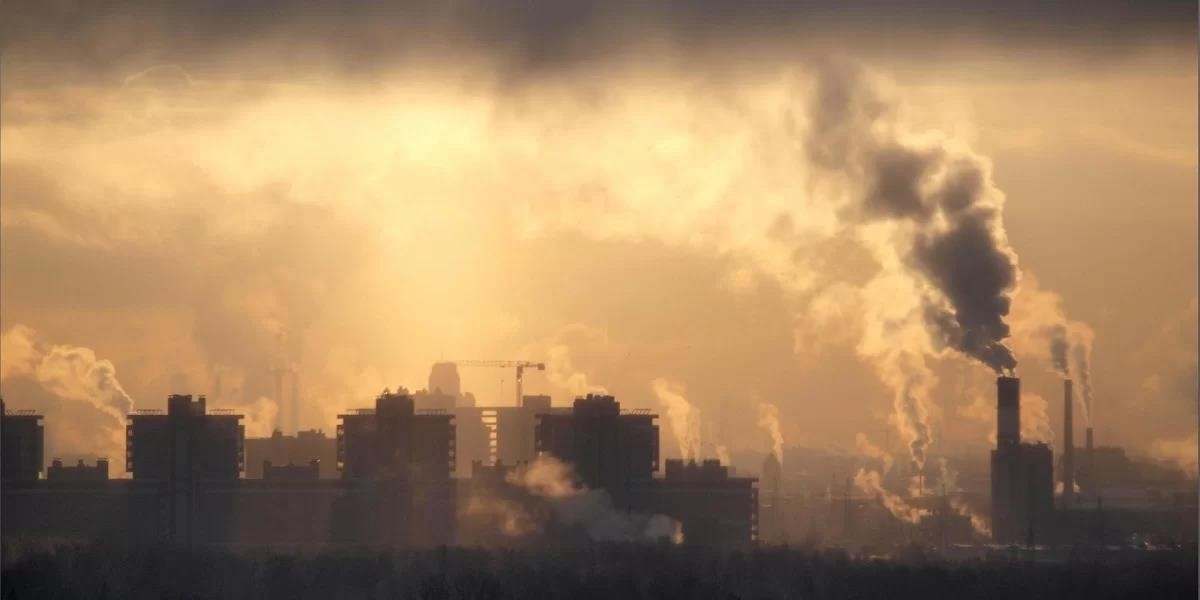
- As per the definition by WHO, Air pollution is contamination of the indoor or outdoor environment by any chemical, physical or biological agent that modifies the natural characteristics of the atmosphere.
- Household combustion devices, motor vehicles, industrial facilities and forest fires are common sources of air pollution.
- WHO data shows that almost all of the global population (99%) breathe air that exceeds WHO guideline limits and contains high levels of pollutants, with low- and middle-income countries suffering from the highest exposures.
- Air quality is closely linked to the earth’s climate and ecosystems globally.
2.
What is the status of air pollution globally?


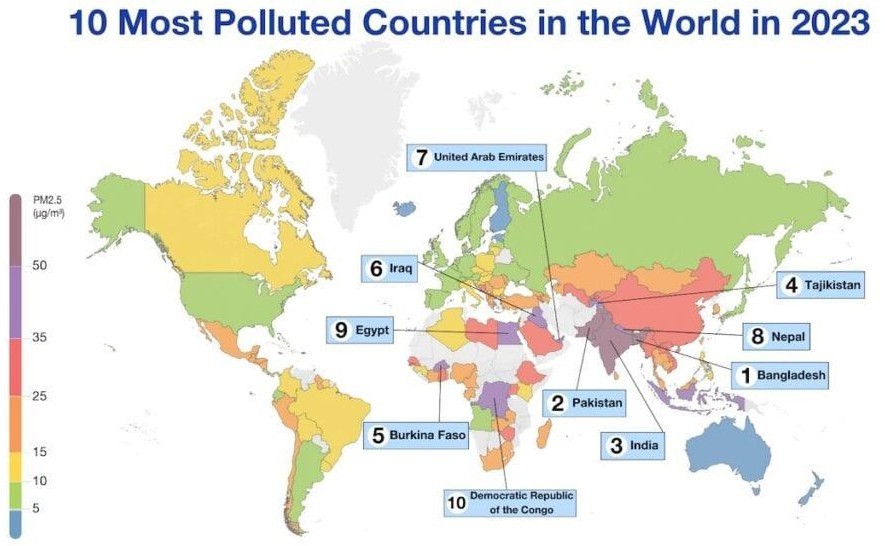

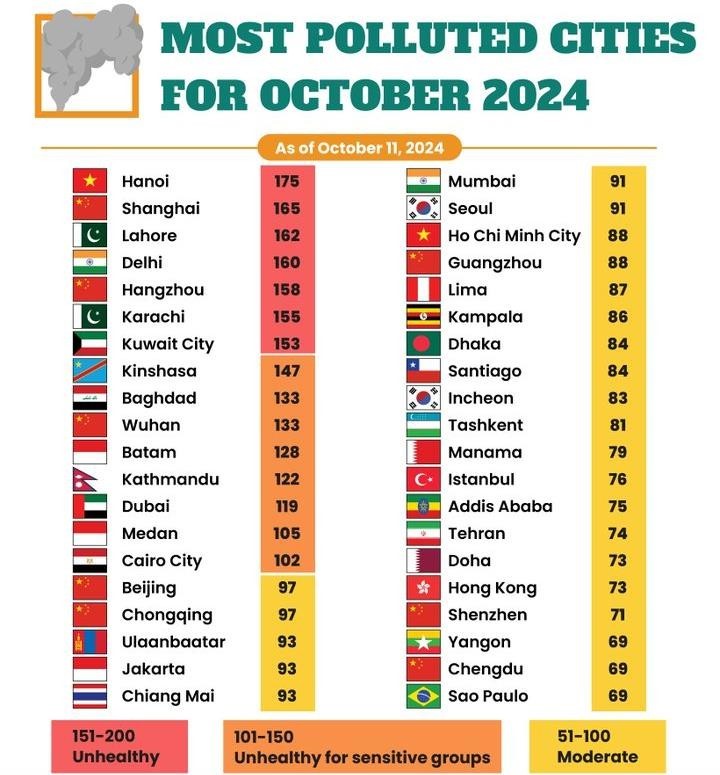
3.
Why is air pollution considered a crisis without borders?
- As per the report Pollution Knows No Borders released by Pure Earth shows how toxic pollution travels from country to country, not only in the air and water, but also in the food and products we buy.
- Air pollution knows no borders because the air we breathe moves freely across regions, countries, and even continents due to atmospheric circulation.
- This movement of air is driven by wind patterns, temperature gradients, and other natural forces, which means pollutants emitted in one location can travel vast distances and affect air quality far away.
- The incredible distances that pollution can spread means that it is not contained within the boundaries of any single nation.
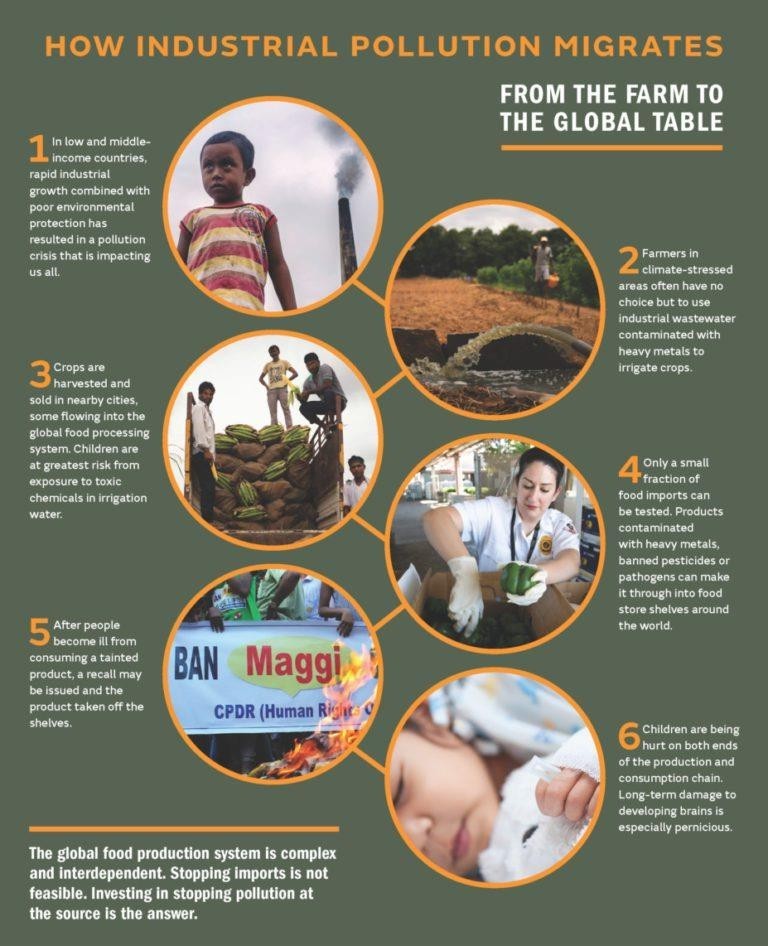
| Determinants | Analysis |
|---|---|
| Wind and Weather Patterns |
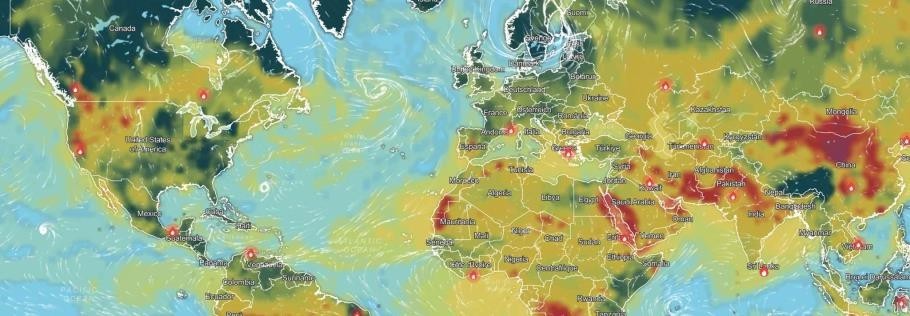 |
| Global Atmospheric Circulation |
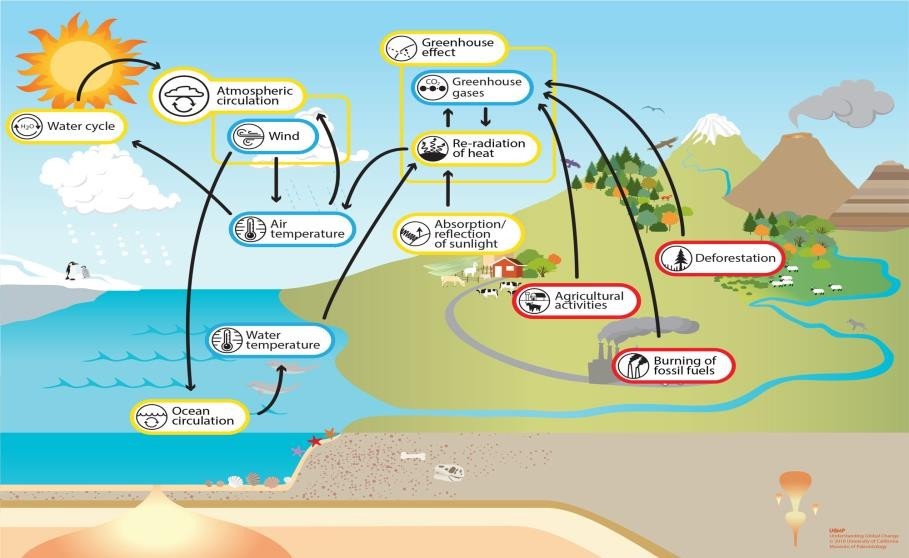 |
| Transboundary Pollution |
 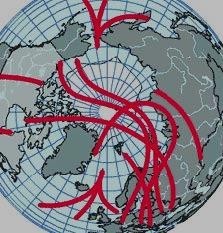 |
| Ocean Currents and Evaporation |
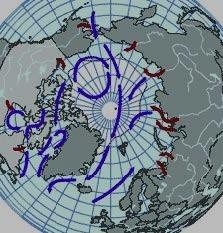  |
4.
How India and Pakistan are divided by borders but united by smog?

- A thick toxic blanket of smog covering eastern Pakistan and entire northern India is seen in a striking satellite image released by American space agency NASA.
- It shows location pins for Lahore in Pakistan's Punjab and New Delhi, with both cities under a huge cloud of grey smog.
- While Pakistan struggles with unprecedented levels of smog, Delhi is not far behind in its battle against pollution.
- Both countries share a troubling commonality, the rapid deterioration of air quality in major urban centers.
- IQAir's data showed that at 6 am on Tuesday (12, November) Lahore's AQI was 1045, followed by Delhi's at 329.
- Wind patterns play a crucial role in transporting pollution across the 500 to 1,000 kilometers (310-620 miles) separating the two Punjabs.
- For smog to cross the border, wind speeds between 5 to 20 km/h (3-12 mph) are ideal, with westerly or north westerly directions acting as a kind of highway for airborne particles.
- When these conditions align, smog can travel from one side of the border to the other in anywhere from one to eight days, depending on wind speed:
- At 5 km/h: Particles might take 4-8 days.
- At 20 km/h: Smog could arrive in just 1-2 days.
5.
Enlist the highlights of the World Air Quality Report 2023?
- According to the World Air Quality Report 2023 by Swiss organization IQAir, Delhi has the poorest air while Bihar's Begusarai is said to be the world's most polluted metropolitan area.
- As per the World Air Quality Report 2023, India had the third worst air quality out of 134 countries in 2023 with an average annual PM2.5 concentration of 54.4 micrograms per cubic meter after Bangladesh (79.9 micrograms per cubic meter) and Pakistan (73.7 micrograms per cubic meter).
- In 2022, India was ranked as the eighth most polluted country with an average PM2.5 concentration of 53.3 micrograms per cubic meter.
- Delhi's PM2.5 levels worsened from 89.1 micrograms per cubic meter in 2022 to 92.7 micrograms per cubic meter in 2023.
- As per the report, 96 percent of India’s population faces PM2.5 levels that exceed the WHO annual guideline by more than seven times.
- As per the report, worldwide one in every nine deaths worldwide is caused by air pollution.
6.
Enlist various types of air pollutants?
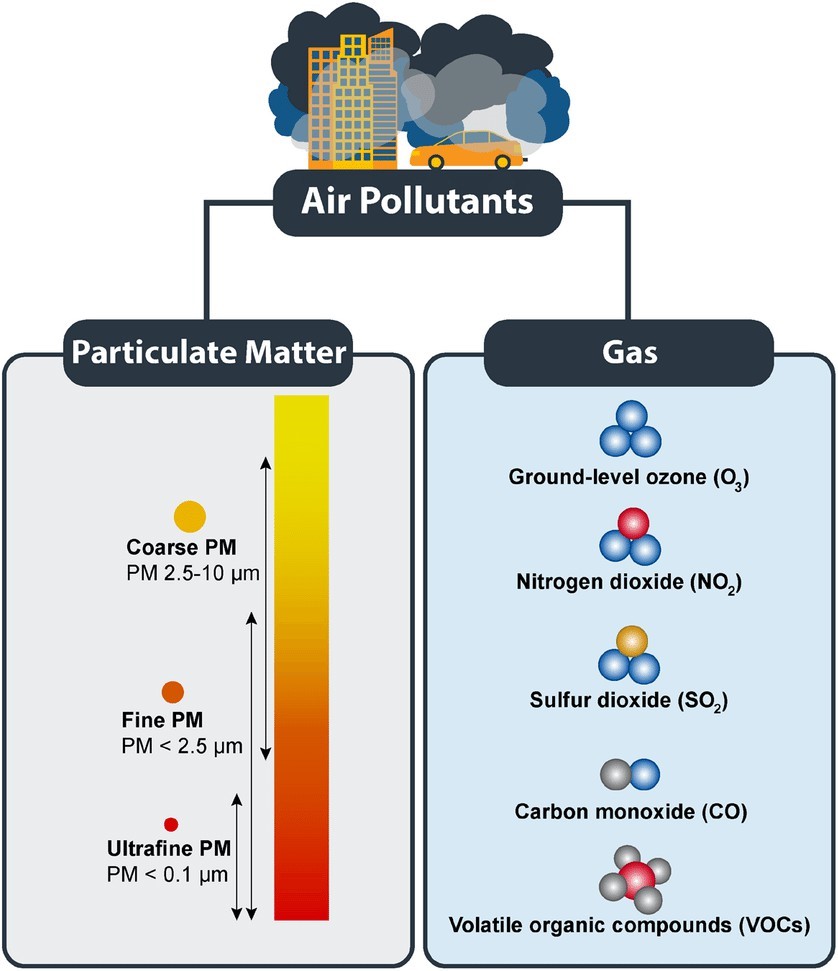
The air pollutants can be classified into the following two types:
| Air pollutant | Description |
|---|---|
| Primary air pollutants |
|
| Secondary air pollutants |
|
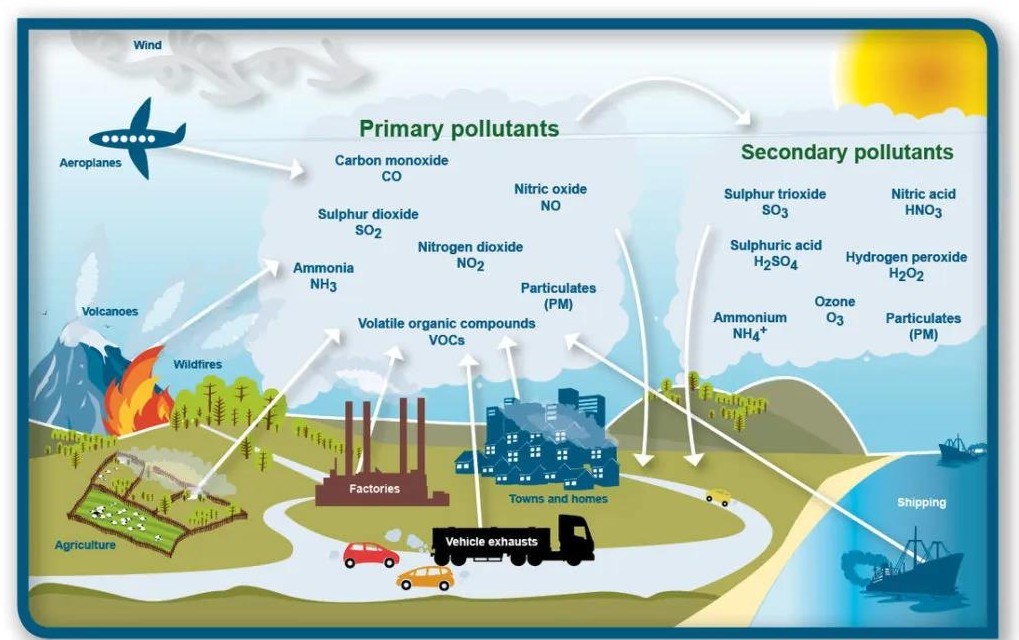
Classification of pollutant according to their existence in nature:
- Quantitative Pollutants: These occur in nature and become pollutants when their concentration reaches beyond a threshold level. E.g. carbon dioxide, nitrogen oxide.
- Qualitative Pollutants: These do not occur in nature and are human-made. E.g. fungicides, herbicides, DDT etc.
7.
How Is Air Quality Measured?
- Air quality is a measure of how clean or polluted the air is.
- Air quality is measured with the Air Quality Index, or AQI.
- The AQI works like a thermometer that runs from 0 to 500 degrees.
- The AQI has six categories that communicate the level of health concern using specific colors.
- Instruments on the ground and satellites orbiting Earth collect information about what is in our air.
- For example, satellites in NOAA’s GOES-R (short for Geostationary Operational Environmental Satellites-R) Series monitor the particle pollution in our atmosphere.
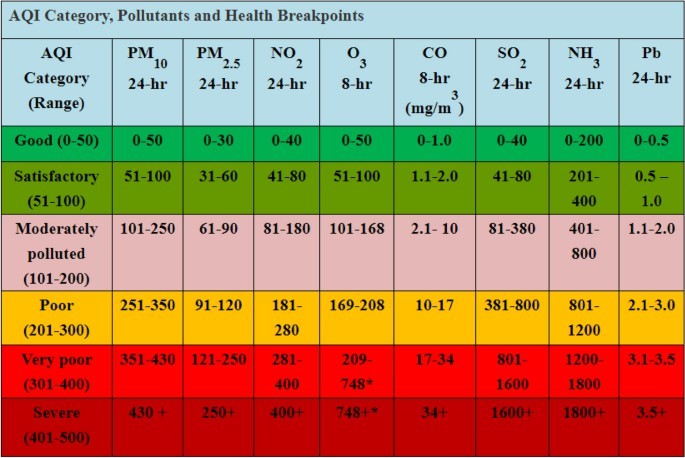
8.
What are the causes of Air pollution?
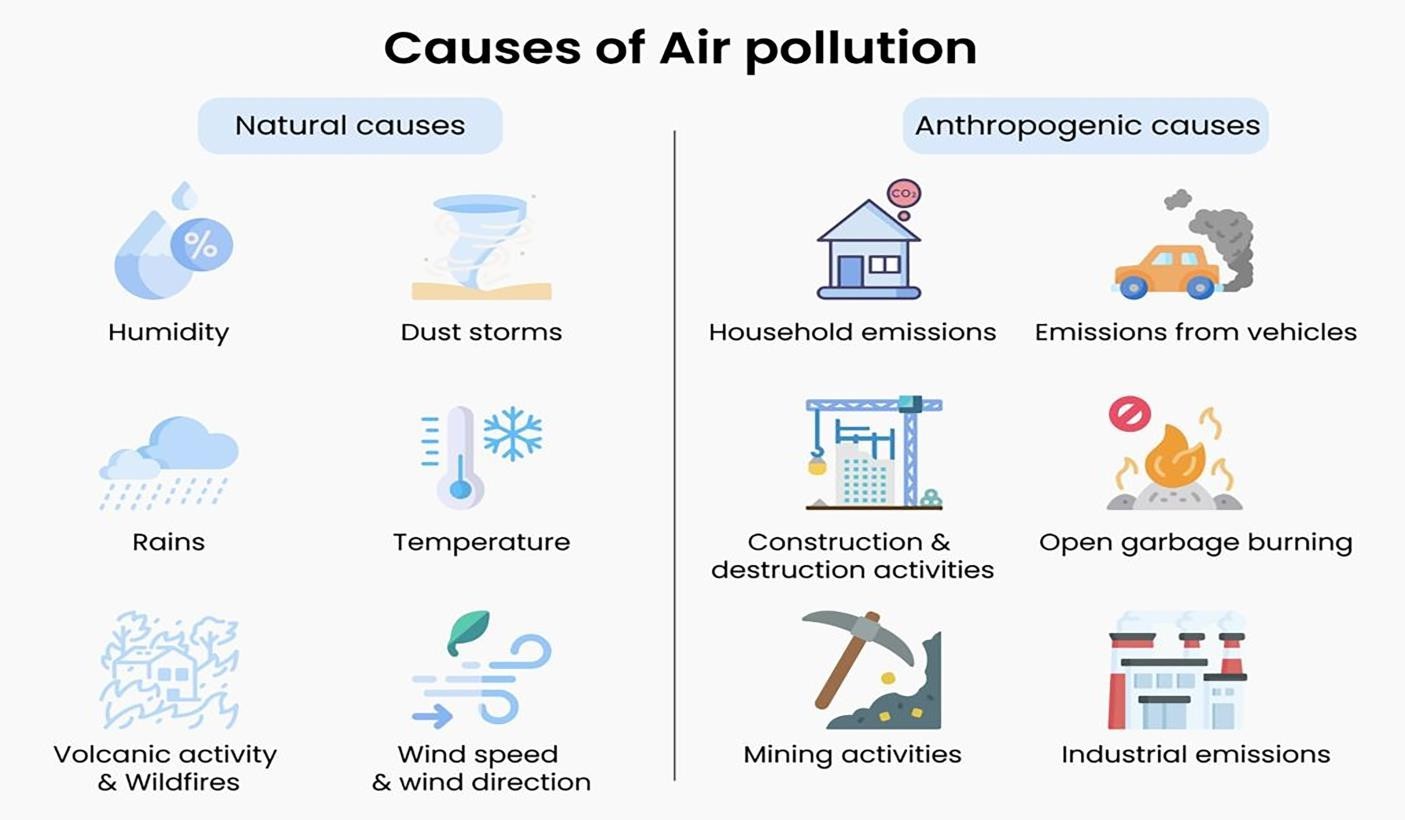
| Causes of air pollution | Analysis |
|---|---|
| Natural Factors |
|
| Fossil fuels |
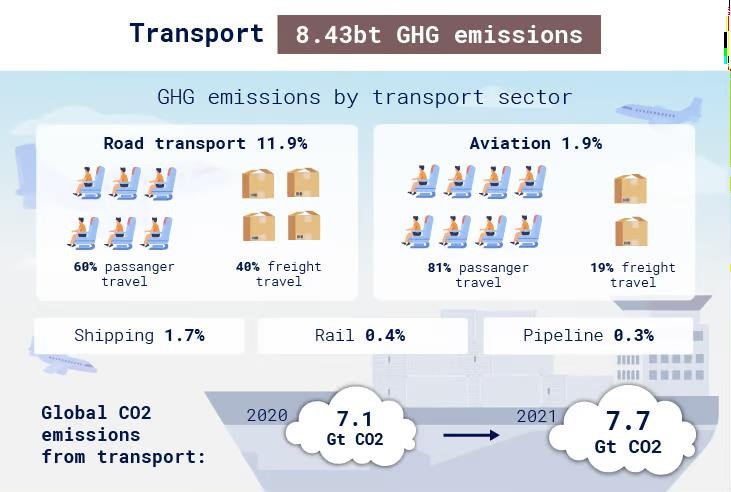  |
| Agriculture |
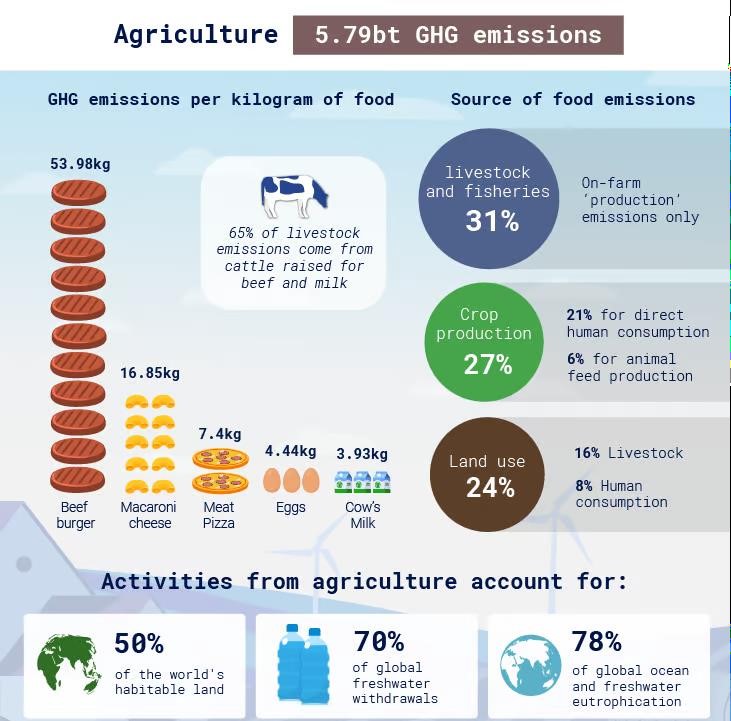 |
| Stubble burning |
 |
| Industrial waste |
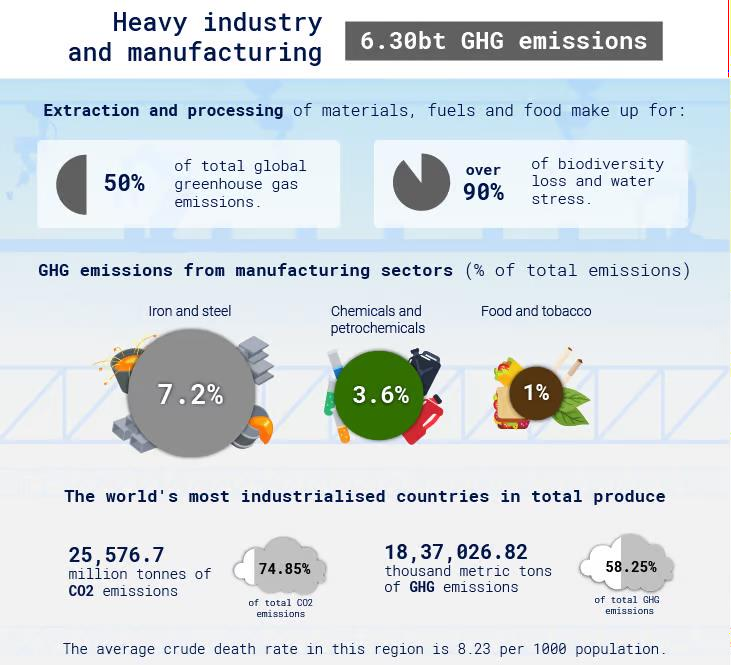 |
| Indoor Pollution |
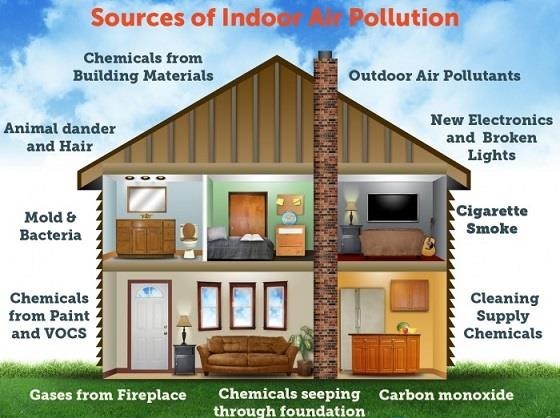 |
| Livestock |
|
| Wildfires |
|
| Open Burning of Garbage Waste |
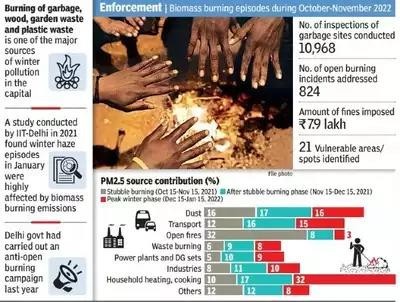
 |
| Fly ash |
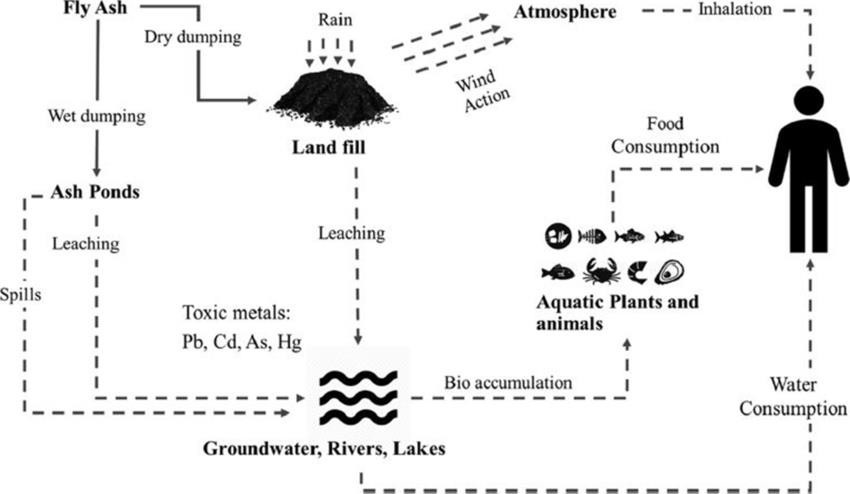  |
| Construction and Demolition |
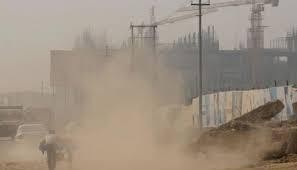 |
| Smog |

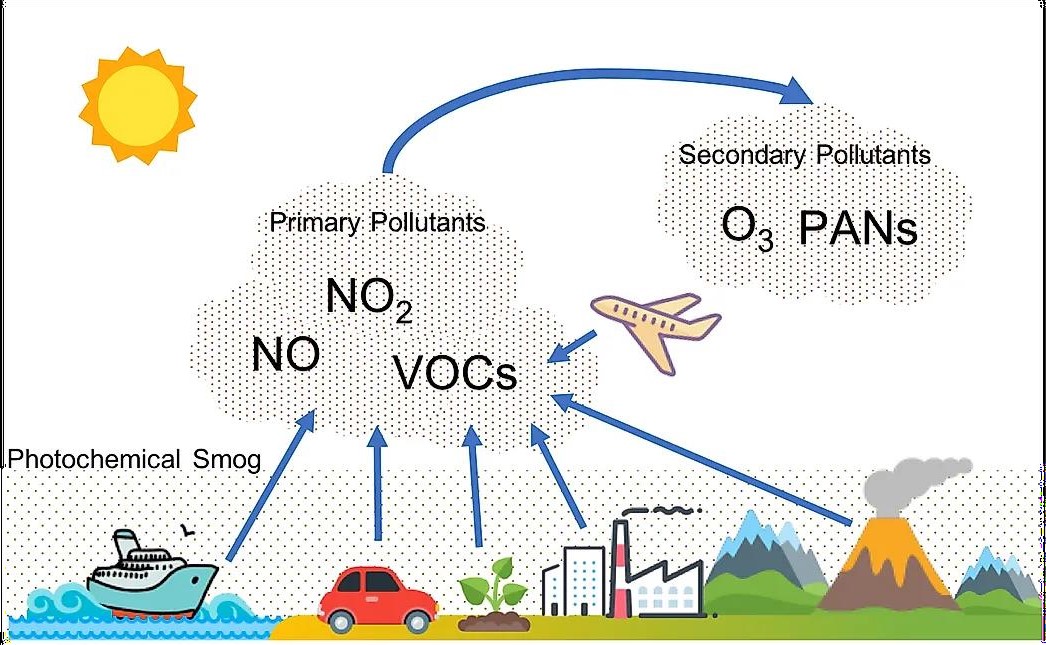 |
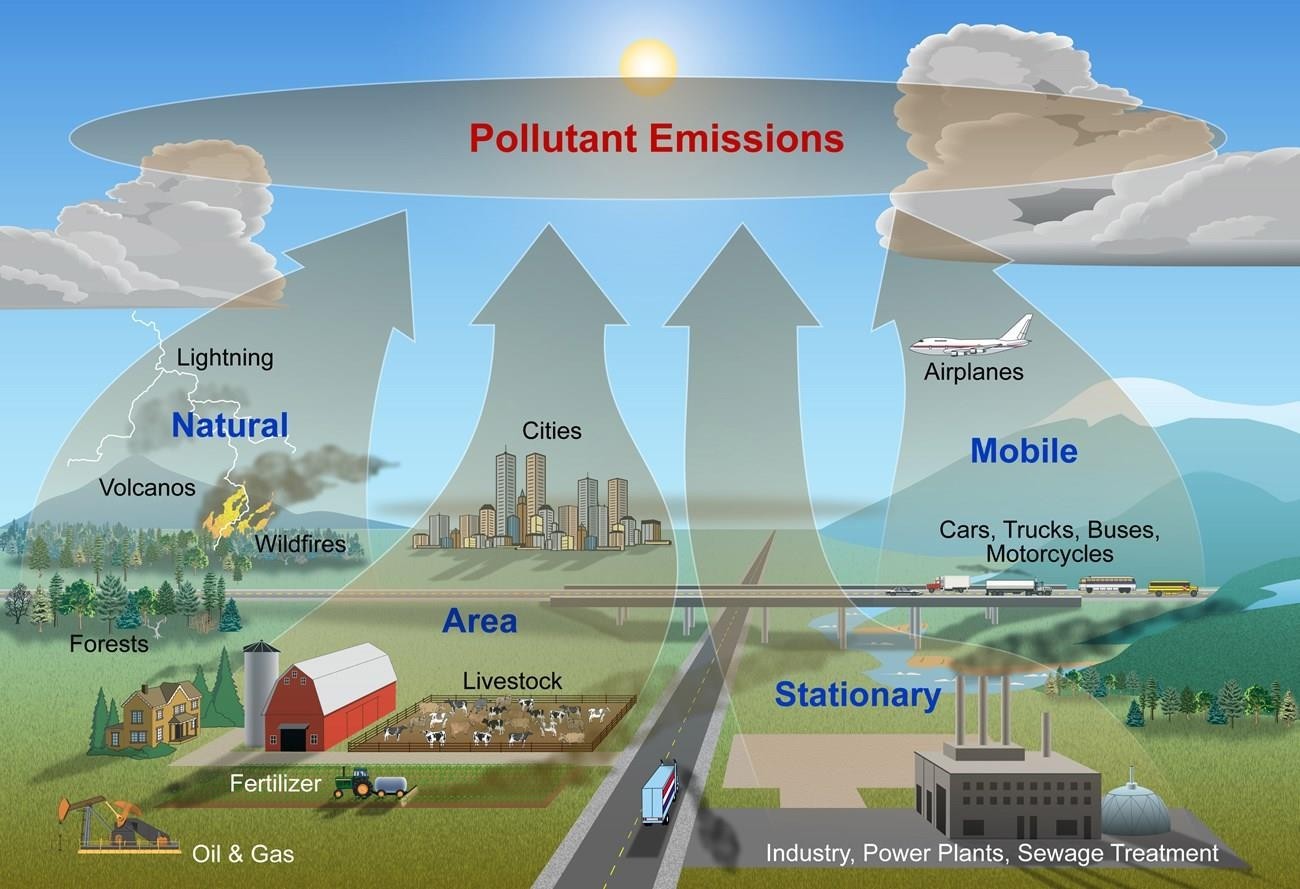
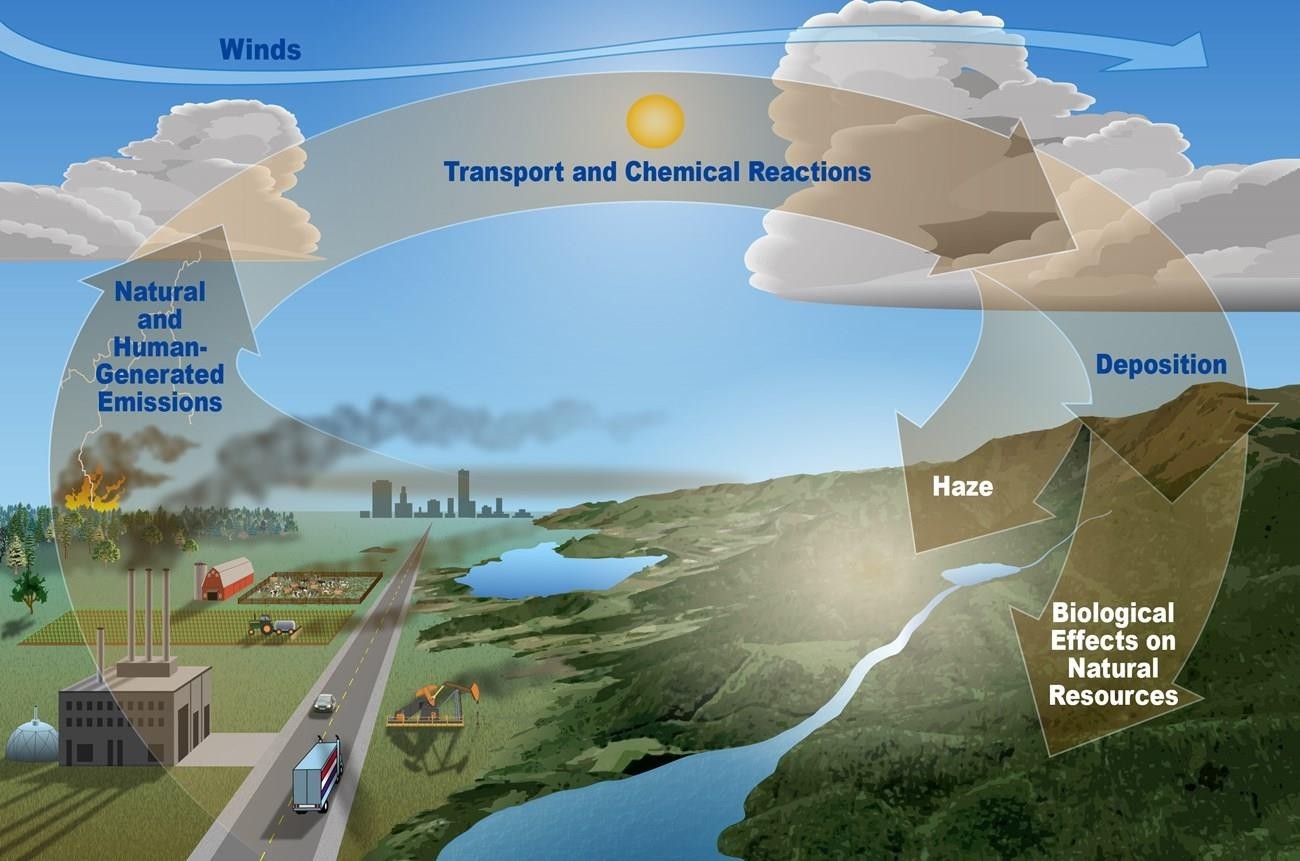
9.
What is PM, and how does it get into the air?
- PM stands for particulate matter (also called particle pollution) and it is a mixture of solid particles and liquid droplets found in the air.
- Some particles, such as dust, dirt, soot, or smoke, are large or dark enough to be seen with the naked eye.
- Others are so small they can only be detected using an electron microscope.
- Particle pollution includes:
- PM10: inhalable particles, with diameters that are generally 10 micrometers and smaller; and
- PM2.5: fine inhalable particles, with diameters that are generally 2.5 micrometers and smaller.
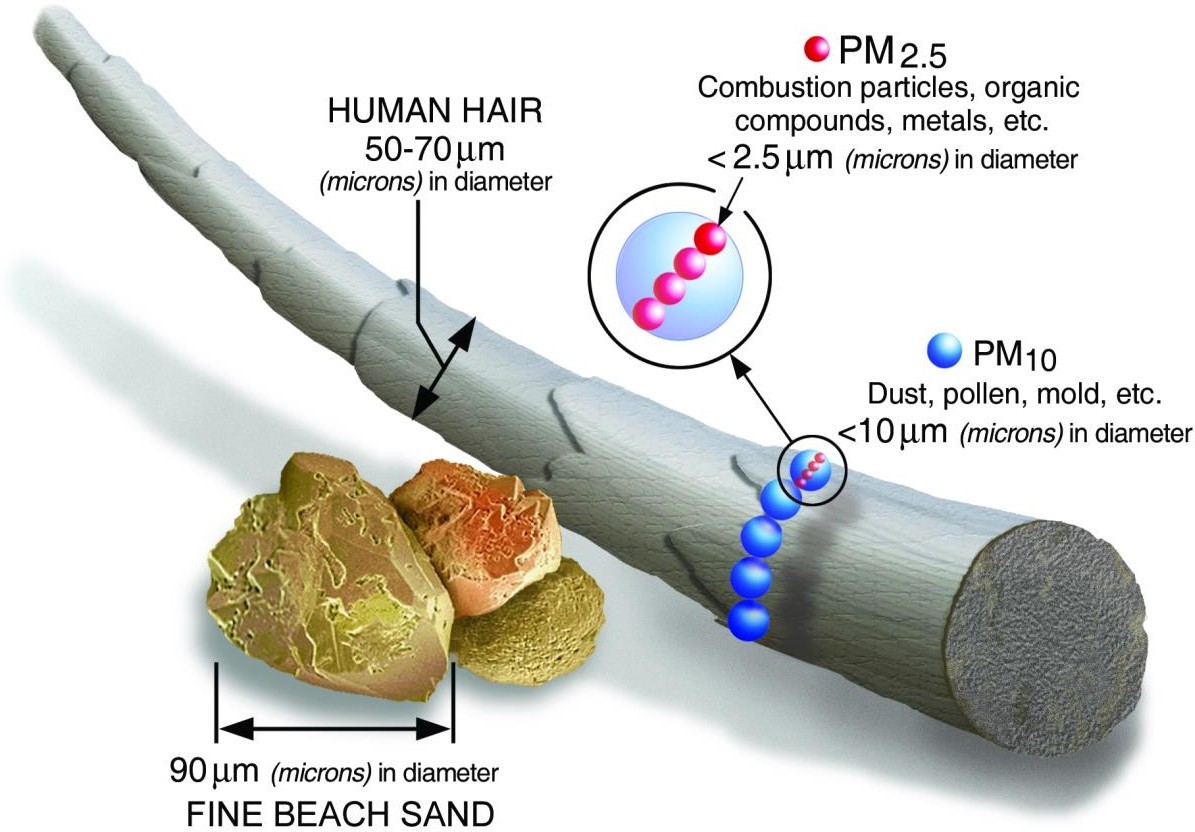
- Most particles form in the atmosphere as a result of complex reactions of chemicals such as sulfur dioxide and nitrogen oxides, which are pollutants emitted from power plants, industries and automobiles.
- Some are emitted directly from a source, such as construction sites, unpaved roads, fields, smokestacks or fires.
- Particulate matter contains microscopic solids or liquid droplets that are so small that they can be inhaled and cause serious health problems.
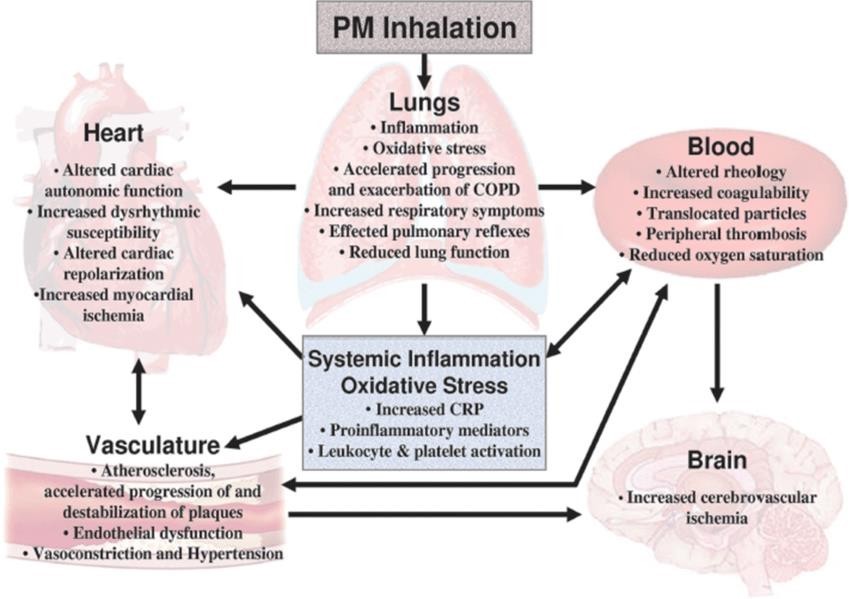
10.
Mention how weather affects the air quality?
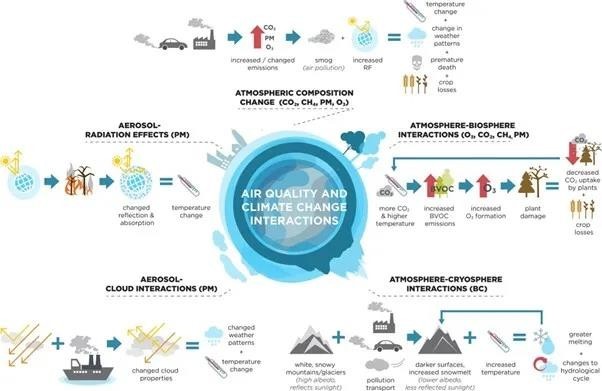
| Determinants | Analysis |
|---|---|
| Wind and temperature |
 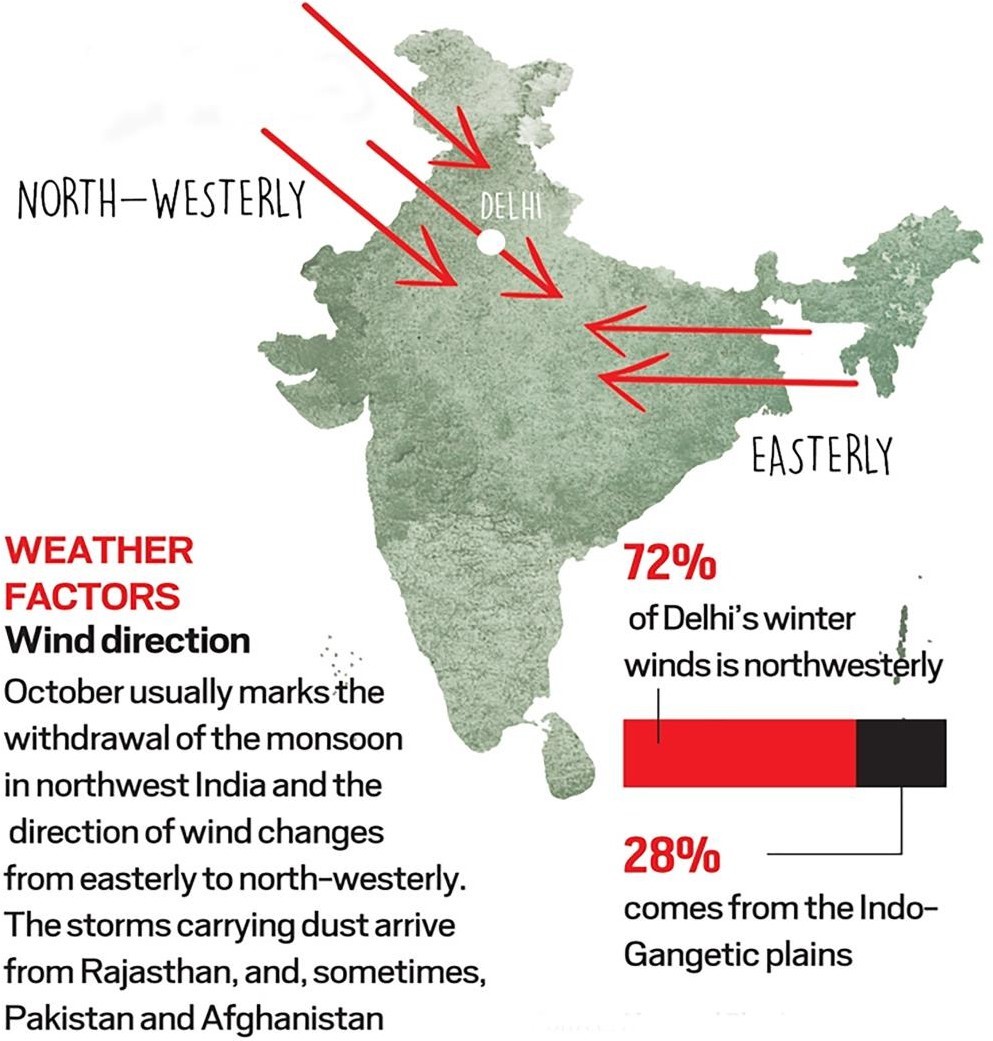 |
| Inversion layers |
 |
11.
What are short-lived climate pollutants and how do they impact climate and health?
- Air pollutants, such as methane and black carbon, are powerful short-lived climate pollutants (SLCPs) that contribute to climate change and ill health.
- Although SLCPs persist in the atmosphere for short lifetimes, their global warming potential is often much greater than carbon dioxide (CO2).
- Black carbon, a component of fine particulate matter, is one of the largest contributors to global warming after CO2.
- Black carbon warms the earth’s atmosphere by absorbing sunlight, thereby accelerating the melting of snow and ice.
- Methane has a warming impact 86 times stronger than CO2 per unit of mass over a 20 year period
- Methane (CH4) is estimated to have a GWP of 27-30 over 100 years.
- Ozone and black carbon affect weather processes and decrease agricultural yields, thus threatening food security.
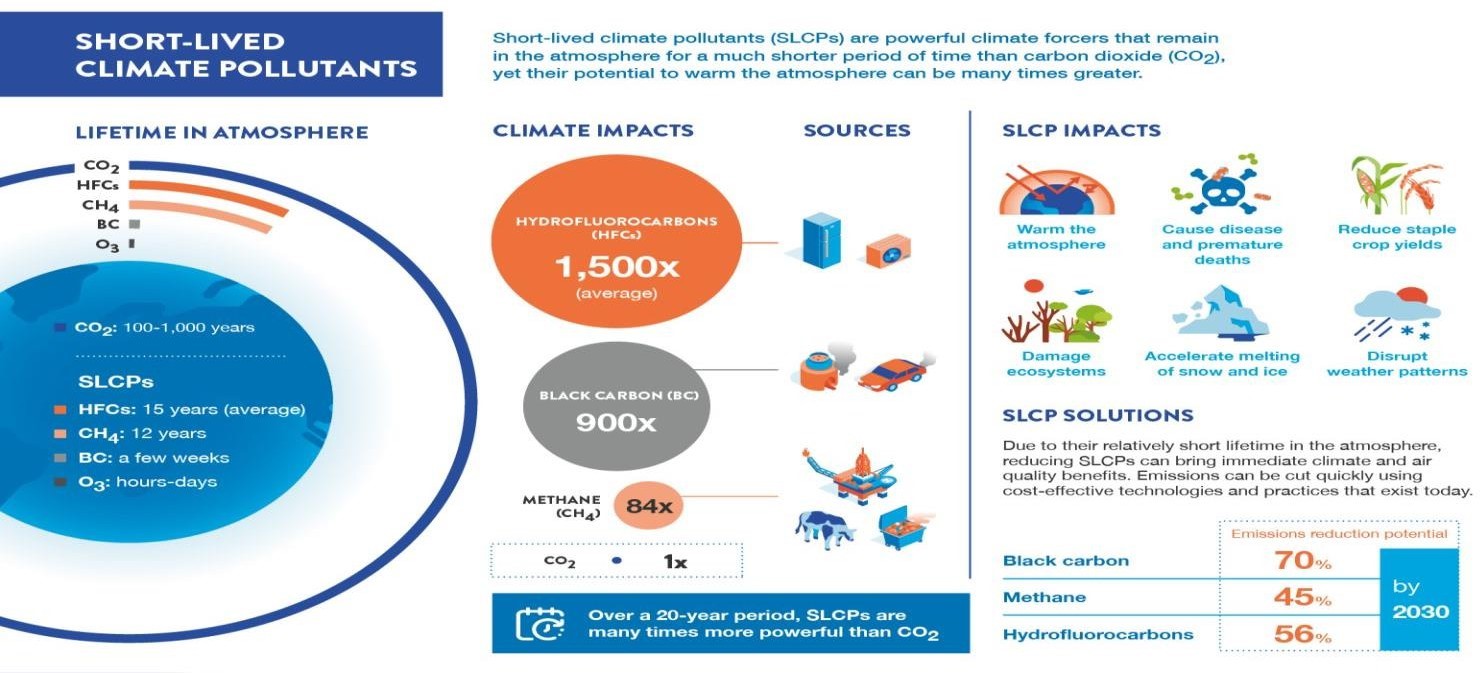
12.
What is the impact of air pollution on health?
- Air pollution poses serious health risks, including respiratory diseases such as asthma and chronic bronchitis, cardiovascular conditions, and premature mortality.
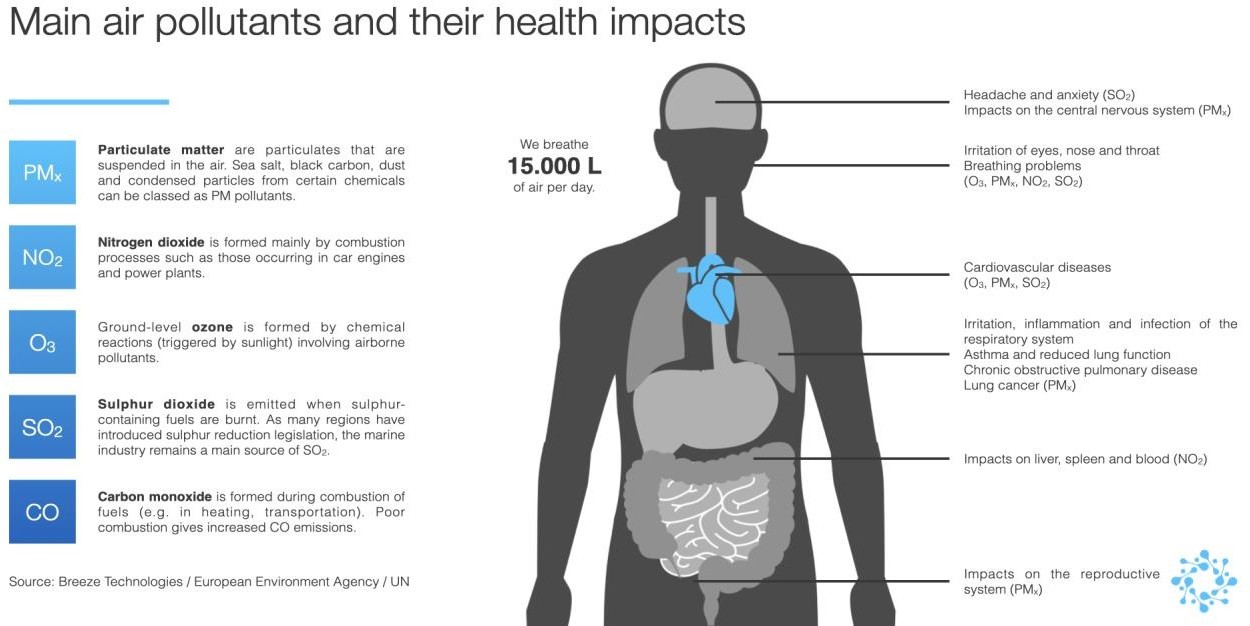
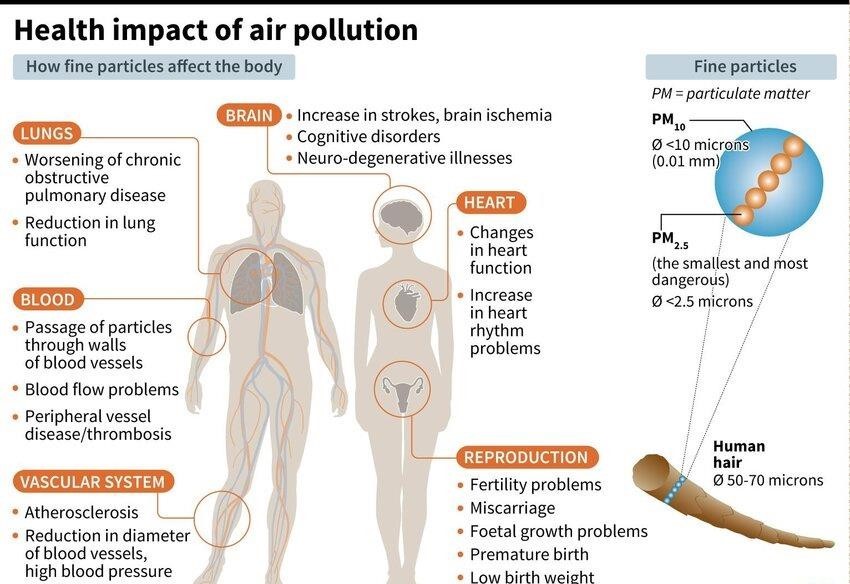
- In 2021, air pollution was a major global killer, contributing to 8.1 million deaths worldwide.
- The report, published by the US-based Health Effects Institute (HEI) in partnership with UNICEF, also highlighted the devastating impact on young children.
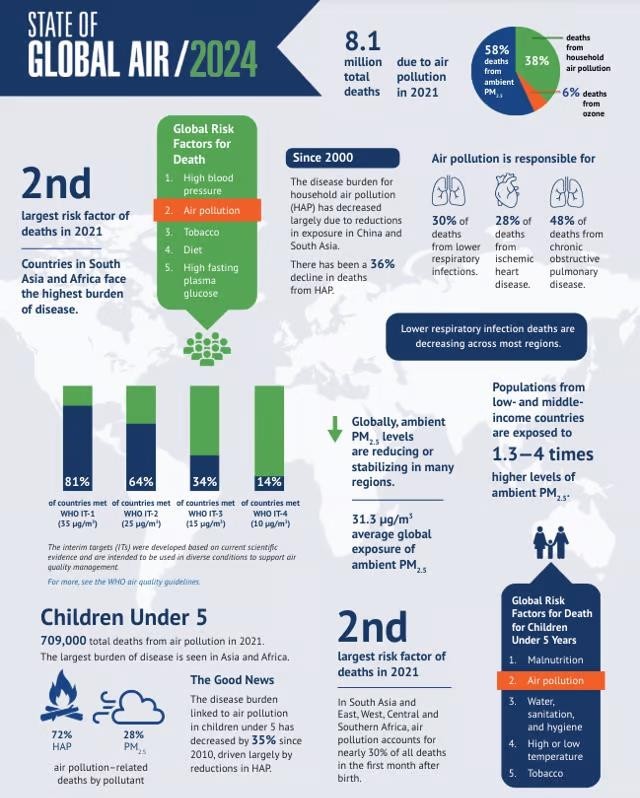
- According to a study published in The Lancet Planetary Health journal, 1.7 million deaths were attributable to air pollution in 2019, which is around 18% of all deaths in India.
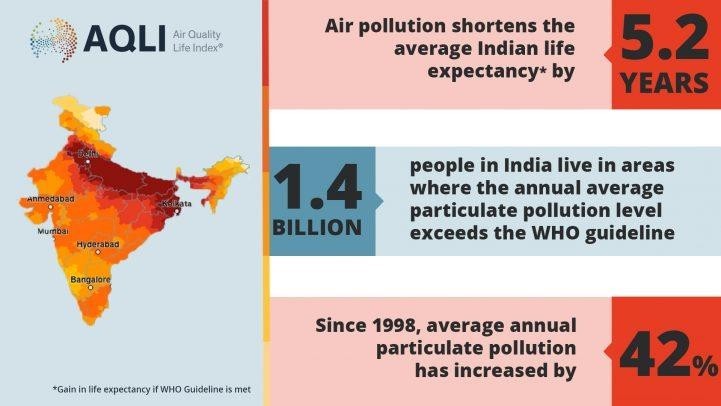
13.
What are the Economic impacts of air pollution?
- Air pollution poses serious health risks, including respiratory diseases such as asthma and chronic bronchitis, cardiovascular conditions, and premature mortality.
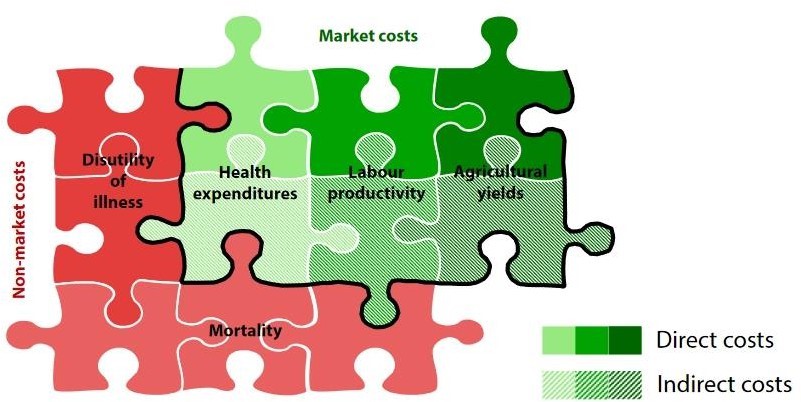
| Impact | Analysis |
|---|---|
| Healthcare costs |
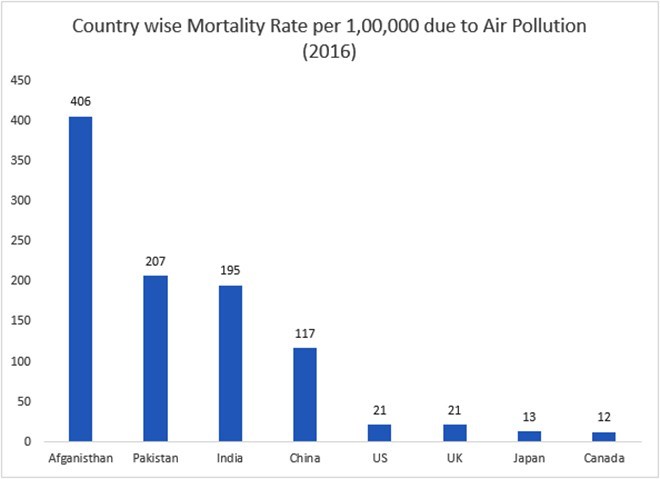 |
| Affects productivity |
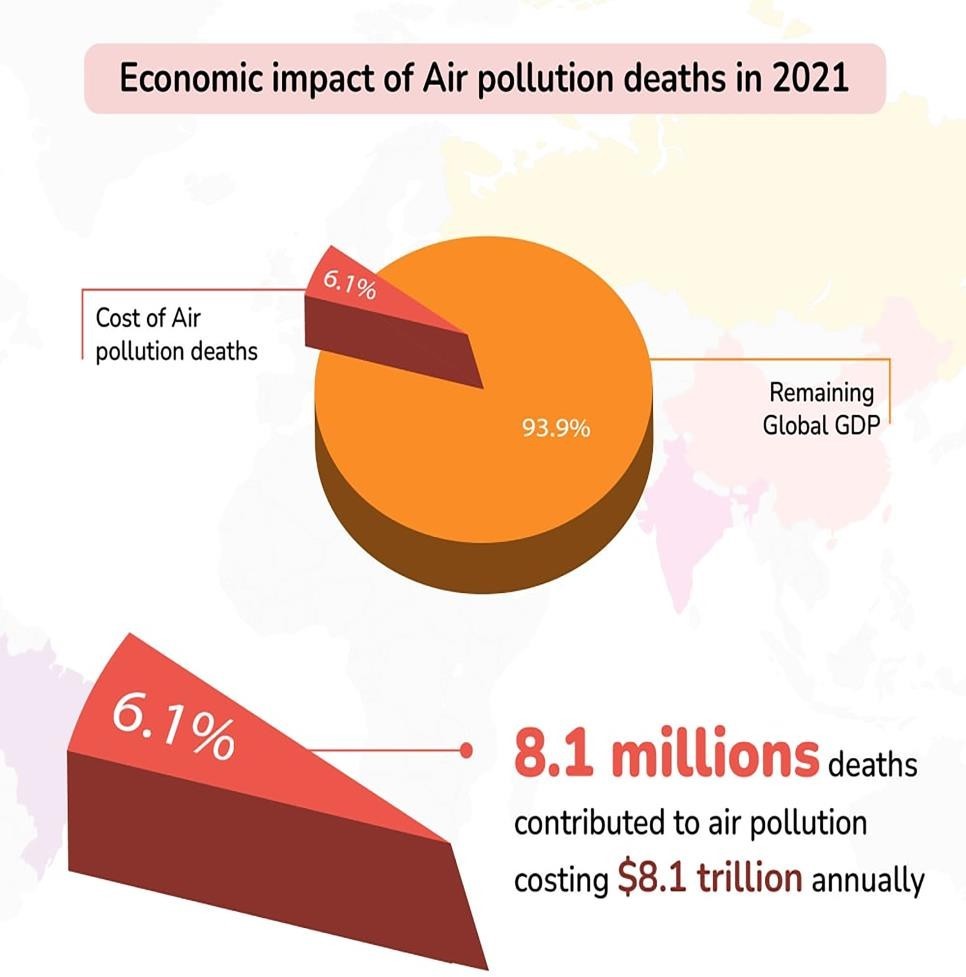 |
| Agriculture |
 |
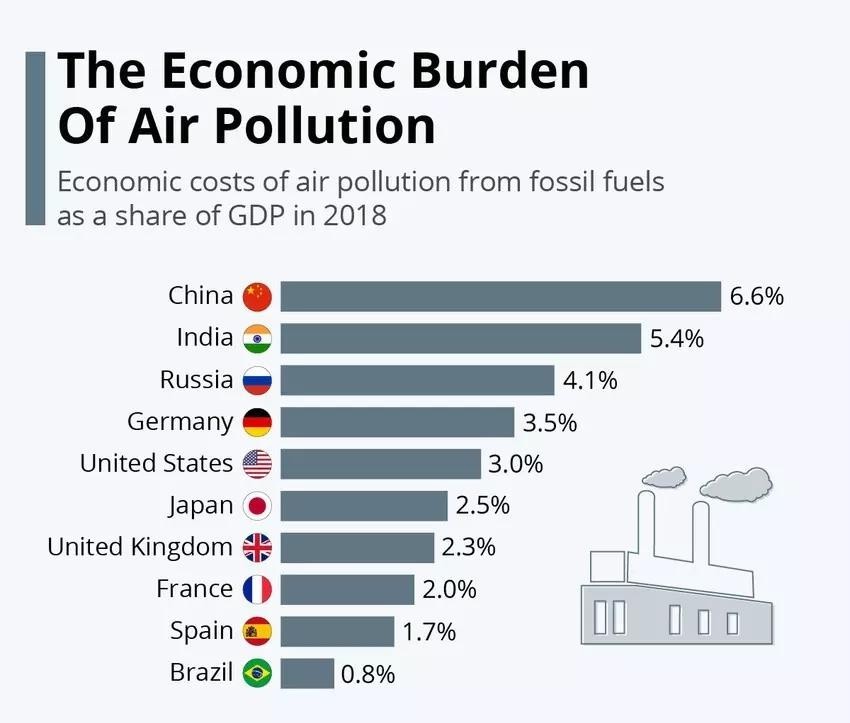
14.
Mention how air pollution contributes to climate change?
- Air pollutants not only severely impact public health, but also the earth’s climate and ecosystems globally.
- Air pollution contributes to climate change in several ways, including:
| Impact | Analysis |
|---|---|
| Greenhouse gasses |
 |
| Ozone depletion |
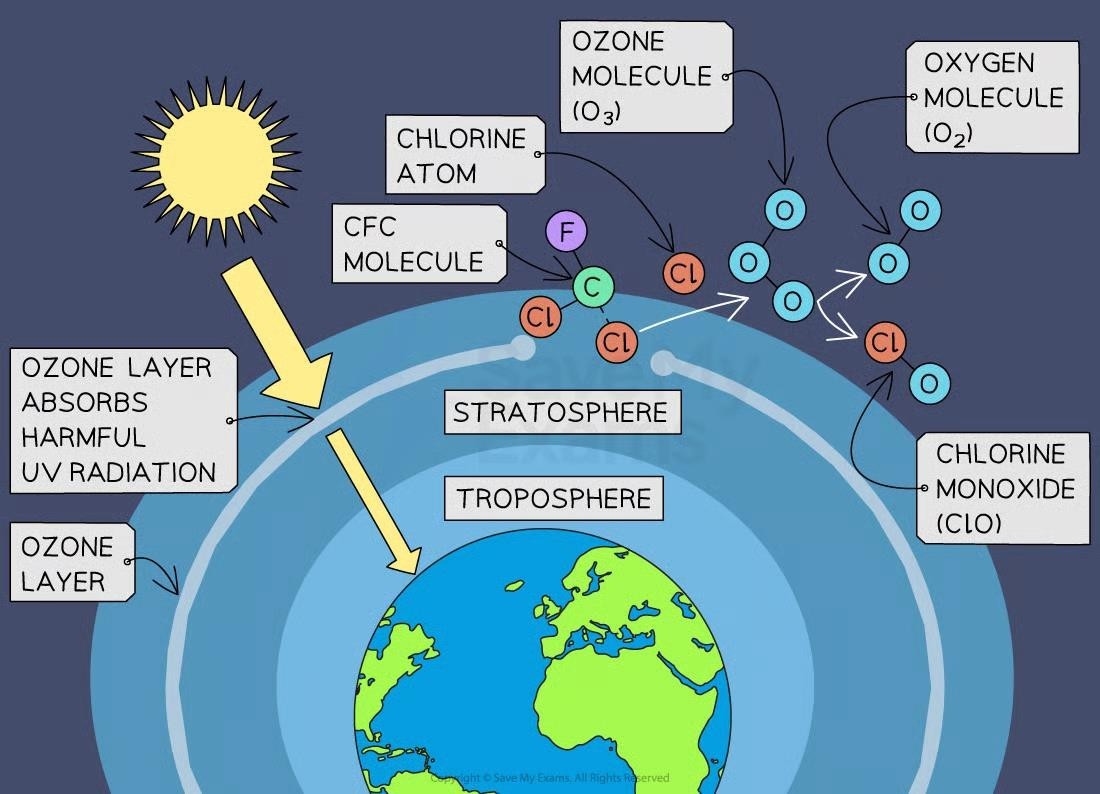 |
15.
Enlist global initiatives to combat air pollution?
| Impact | Analysis |
|---|---|
| Global Methane Pledge |
 |
| International Clean Air Day |
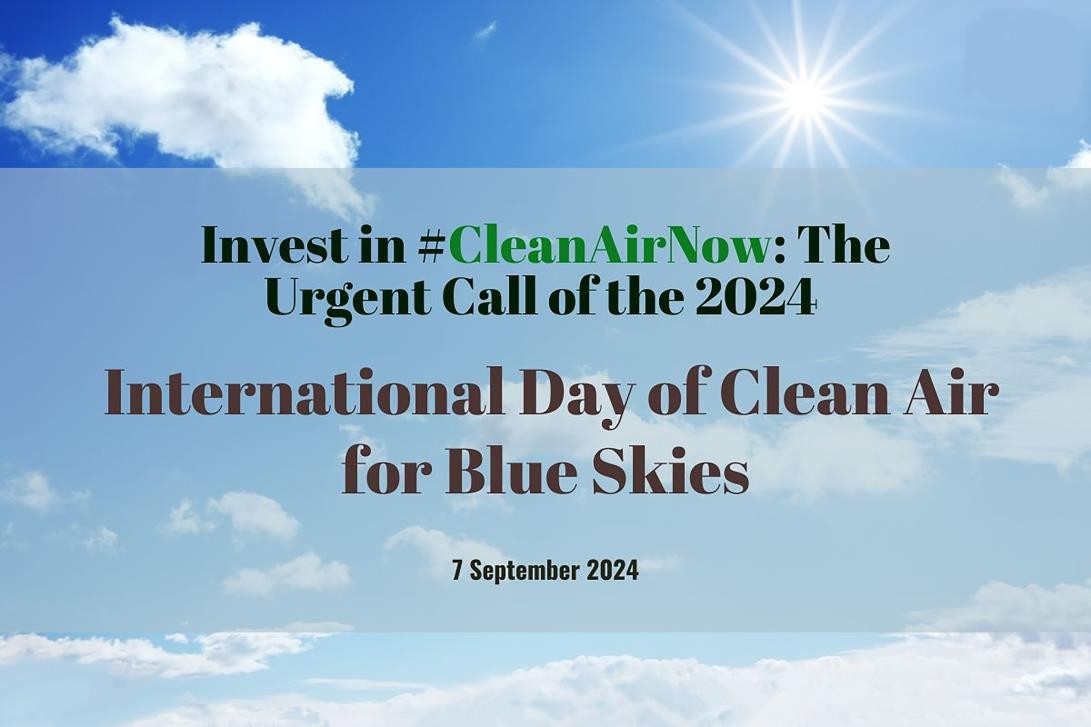 |
| BreatheLife campaign |
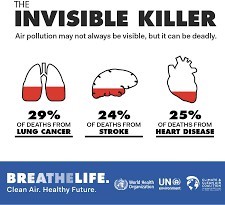 |
16.
Enlist initiatives taken by India to combat air pollution?
| Impact | Analysis |
|---|---|
| The Winter Action Plan 2024 |
 |
| National Clean Air Programme (NCAP) |
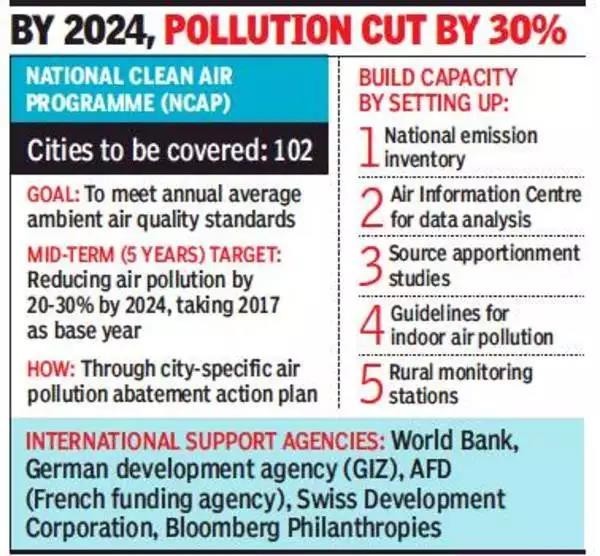 |
| New Commission for Air Quality Management |
 |
| BS-VI Norms |
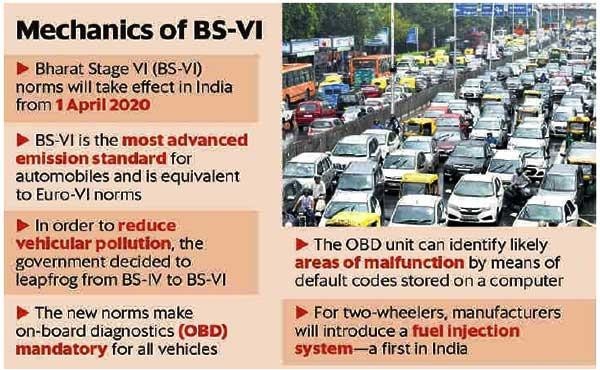 |
| Graded Response Action Plan |
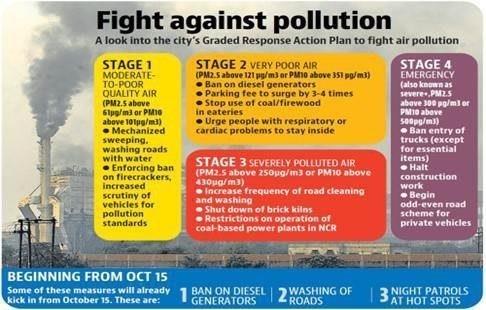 |
| National Electric Mobility Mission Plan (NEMMP) |
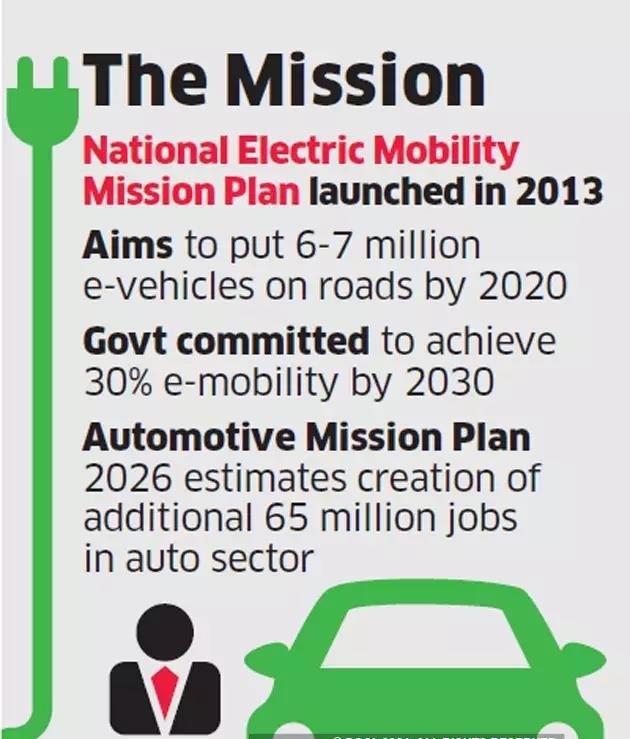 |
| (R&D) initiatives |

|
17.
What could be the possible way ahead?
| Way ahead | Analysis |
|---|---|
| Psychological Nudging |
|
| Enforcement of Regulations |
|
| Community Engagement |
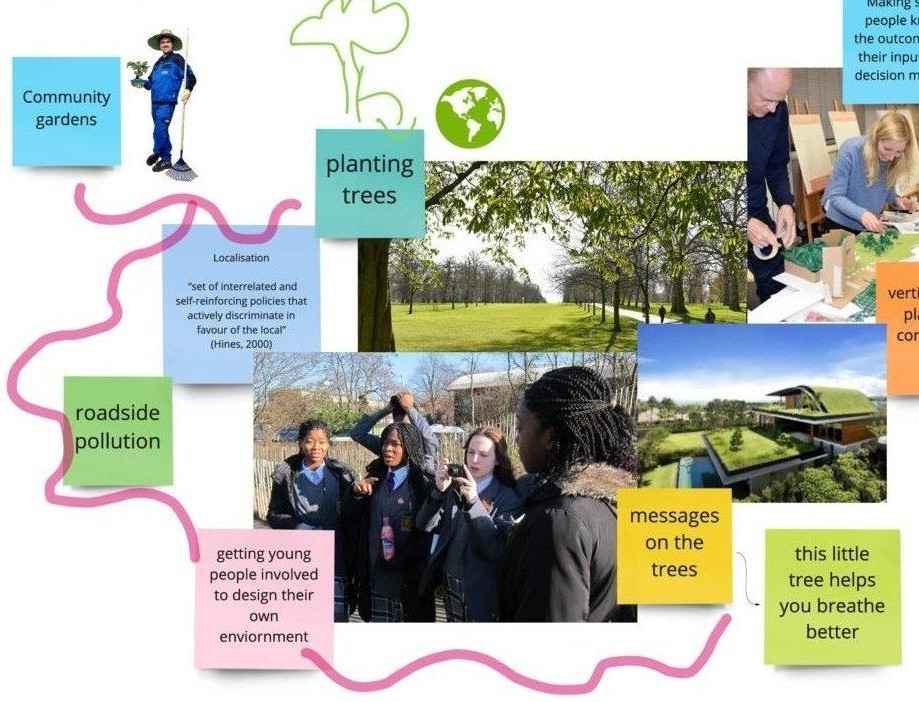 |
| Integrated Urban Planning: |
|
| Government Policies and Incentives: |
|
What is the relevance of the topic for UPSC CSE?
For Prelims: Air pollution, Solid Waste Management, National Green Tribunal, National Clean Air Programme, System of Air Quality and Weather Forecasting and Research (SAFAR) Portal, New Commission for Air Quality Management, Graded Response Action Plan
For Mains: Major Driving Factors of Air Pollution, Reasons for Persistent Air Pollution in India Despite Significant Initiatives
Some Previous Years Prelims Questions
Q1. According to the Environmental Protection Agency (EPA), which one of the following is the largest source of sulfur dioxide emissions?(2024)
(a) Locomotives using fossil fuels
(b) Ships using fossil fuels
(c) Extraction of metals from ores
(d) Power plants using fossil fuels
Q2. In the context of WHO Air Quality Guidelines, consider the following statements:(2022)
1. The 24-hour mean of PM2.5 should not exceed 15 µg/m3 and annual mean of PM2.5 should not exceed 5 µg/m3.
2. In a year, the highest levels of ozone pollution occur during the periods of inclement weather.
3. PM10 can penetrate the lung barrier and enter the bloodstream
4. Excessive ozone in the air can trigger asthma
Which of the statements given above are correct?
(a) 1, 3 and 4
(b) 1 and 4 only
(c) 2, 3 and 4
(d) 1 and 2 only
Q3. In the cities of our country, which among the following atmospheric gasses are normally considered in calculating the value of the Air Quality Index? (2016)
1. Carbon dioxide
2. Carbon monoxide
3. Nitrogen dioxide
4. Sulfur dioxide
5. Methane
Select the correct answer using the code given below:
(a) 1, 2 and 3 only
(b) 2, 3 and 4 only
(c) 1, 4 and 5 only
(d) 1, 2, 3, 4 and 5
Some Previous Years Mains Questions
Describe the key points of the revised Global Air Quality Guidelines (AQGs) recently released by the World Health Organisation (WHO). How are these different from its last update in 2005? What changes in India’s National Clean Air Programme are required to achieve revised standards? (20201)
Some Questions from This Year and Previous Years Interview Transcripts
Board Lieutenant General Raj Shukla sir:
- Why is there air pollution in delhi?
Board Sheel Vardhan Sir:
- What is NGT? its role, why and when it was set up ?
- So do you think NGT has really made an impact?
- Why do we take actions when air is polluted and not put limitations on when it is clean to maintain the good AQI?
Board Suman Sharma mam:
- How Delhi air is polluted by parali from Punjab?
- If you are DM in Punjab, how will you solve it?
Board Suman Sharma mam:
- What are we doing for air and water pollution?
Board BB Swain sir:
- How to tackle stubble burning?
- Tell an issue of stubble burning apart from pollution.
Board Sheel Vardhan Singh sir:
- Tell me why groundwater is getting polluted? and solutions.
- As we know there is stubble burning in states surrounding NCR, what are its solutions?
- How will you pursue farmers in this case at an individual level?
Some Questions for QUIZ
Q1. Consider the following pollutants:
1. Nitrogen dioxide
2. Sulphur dioxide
3. Ammonia
4. PM 10
5. Ground-level ozone
6. Lead
How many of the above pollutants are considered in the calculation of AQI?
(a) Only three
(b) Only four
(c) Only five
(d) All six
Some Questions for POLL
Q1. Are you satisfied with the steps taken to combat Air pollution in the Delhi region?
(a) YES
(b) NO
(c) Can’t say
Q2. Are developed countries spending enough to combat pollution?
(a) YES
(b) NO
(c) Can’t say